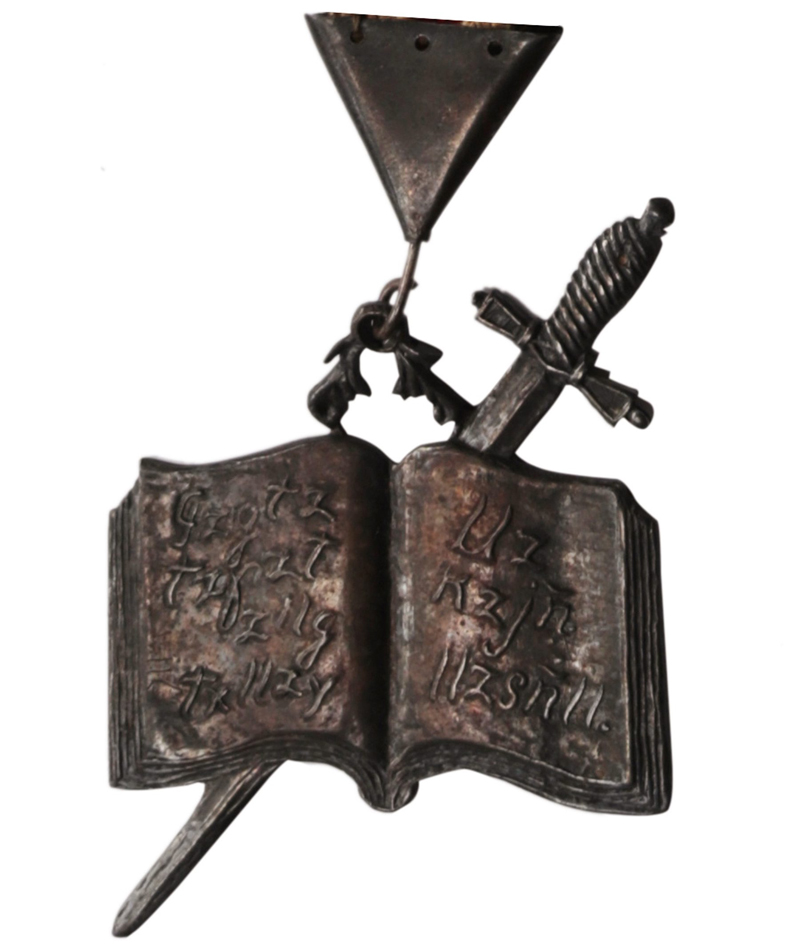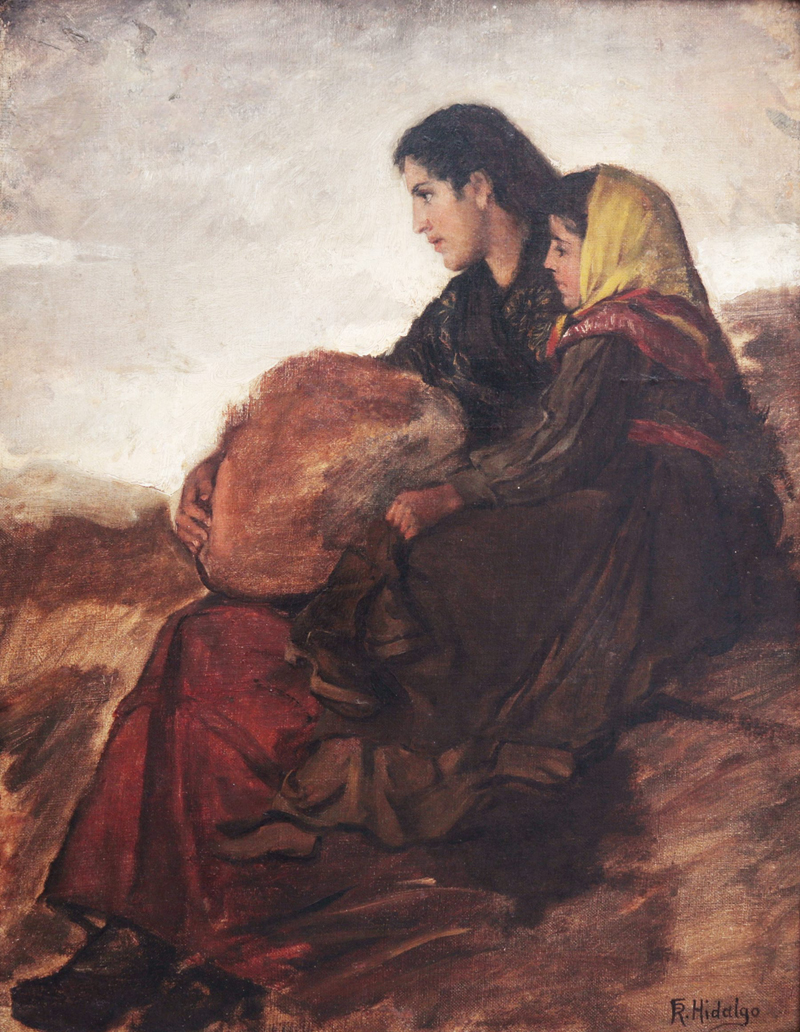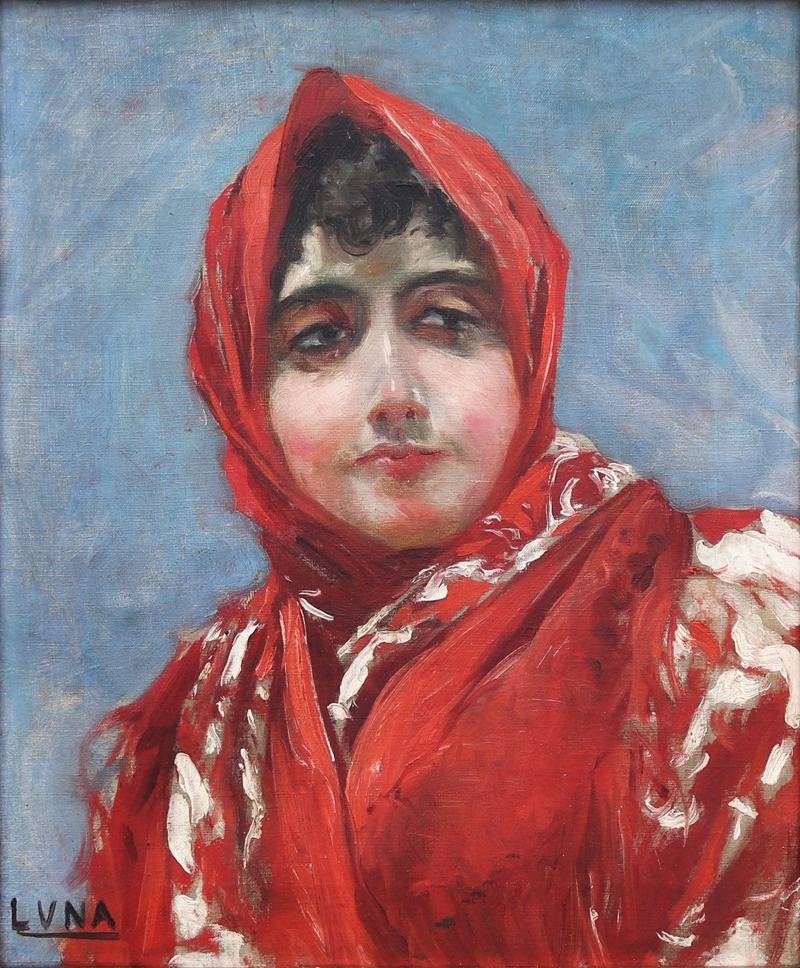KKK’s secret symbols, Rizal’s sacred objects at León Gallery Auction


A king’s ransom of secret symbols and sacred objects gleam at the next León Gallery auction in September.
The ceremonial medallions belonging to the KKK Supreme Council — which led the courageous group to declare the Philippine Revolution of 1896 — will be offered. These consist of nine emblems that would identify its officers during the secret Masonic-style meetings of the Katipunan.
One of the most precious is a medal of a mythic sun (with a human face) surrounded by eight rays. It was worn by the Supremo Andres Bonifacio. Interestingly, the emblem foreshadowed our modern flag with eight rays around the sun.
Another splendid piece, worn by Emilio Jacinto, is an open book pierced by a sword. The book is covered with the KKK code for “katipunan ng mga anak ng bayan.” (Decryption provided by the National Historical Institute in 1992.)

An open book pierced by a sword was worn by Emilio Jacinto.
The rest of the medallions were worn by other heroes, including Pio Valenzuela. All of the pieces were wrought from silver. They were featured prominently in Adrian Cristobal’s landmark work, The Tragedy of the Revolution.
The tampipi (woven box) that hid Rizal’s Noli Me Tangere is also a highlight of the auction.
The Noli was considered so incendiary that mere possession of it would lead to arrest, torture and even death by the Spanish police. The feared Guardia Civil would raid suspect houses in search of this forbidden book.
That sacred Rizal “Tampipi” — a symbol of our hero’s defiant spirit and our people’s thirst for freedom no matter the cost — has been handed down through the generations of the family of José Rizal. It has survived the revolution and two world wars.
Also in focus is a first edition of the highly important Sucesos de Las Islas Filipinas (The Events of the Philippine Islands) by Antonio de Morga and annotated by Rizal.

The sun medallion that once belonged to Andres Bonifacio
It was originally written by Antonio de Morga, who in his time was the second most important man in the Philippines, serving as lieutenant governor from 1595 to 1603..
The Sucesos was published in 1609 while he was in Mexico serving in its government. Its last chapter, and its most important for Filipinos, detailed his observations of life in Manila.
Rizal discovered this book in the British Library in 1888, copying out the entire book, almost 400 pages of it, by hand — and annotating it painstakingly.
This detailed commentary was written between the Noli (1887) and the Fili (1891). The book was published in Paris in 1890.
It was promptly banned in the Philippines and thus copies of this book are exceedingly rare.
In Rizal’s annotations, he built a vision of a glorious pre-colonial Philippines, with its own laws, written language, skill sets in boat-building and metal-working, as well as a rich economy. For Rizal, this was an important ingredient in the discovery of our national identity.

Resurreccion Hidalgo’s “The Country Women,” formerly in the collection of Luis Araneta
The Katipunan adopted the idea of ancient Filipino writing and would emblazon its flags with the baybayin symbol for “Ka” to stand not just for “Katipunan” but also for its highest ideal, “Kalayaan” or freedom. The secret society would also make part of its membership test the questions: how was the Philippines before the Spanish came, and how is the Philippines today after their coming?
As for our heroes in the arts: if Juan Luna is the sun of 19th-century Philippine painting, then Felix Resurreccion Hidalgo was its moon.
Rizal expressed the difference between these two: “In Luna, we find the mysterious — like an echo of the dark storms of the tropics, its thunderbolts, and also, its volcanoes.
“In Hidalgo we find all is light, harmony, clearness; like the Philippines on moonlit nights, with her horizons that invite to meditation and suggest infinity.
“Yet both of them, said Rizal, although their works are so different in appearance — they are fundamentally one. Just as our hearts beat in unison in spite of striking differences.

“Una Chula” by Juan Luna is a portrait of an enigmatic gypsy.
There was no doubt in Rizal’s mind that “Luna and Hidalgo belong to the world as much as to the Philippines.”
These two paintings, Juan Luna’s “Una Chula” and Resurreccion Hidalgo’s “Country Women” offer tantalizing portraits of the gitanas, or gypsy women.
The gypsy woman was a symbol of the free-spirited, strong, alluring, romantic. She was in marked contrast to the chaste Victorian woman of the refined classes. She lives in the popular imagination as the provocative Carmen of Bizet’s opera, and the beautiful Esmeralda in The Hunchback of Notre Dame.
Luna’s “Chula” (or Spanish for “pretty young thing”) is a painted lady wrapped in a seductive scarlet. She has dark eyes and flushed cheeks and has an expression that is pensive but unrepentant.
Resurreccion Hidalgo’s “The Country Women” is a famous work featured in Alfredo Roces’ monumental work on this master. Its provenance is most regal: having once belonged to the bon vivant and renowned collector Luis Araneta.
In this painting, a pair of women is depicted, perhaps a mother and her daughter. They are possibly gypsies, with their possessions wrapped in a brown cloth between them. They are dressed in the colors of the earth, of copper-golds and terra cottas. They seem to be contemplating the freedom of the road ahead of them, beneath a dusky sky.



















